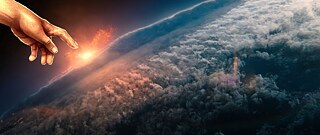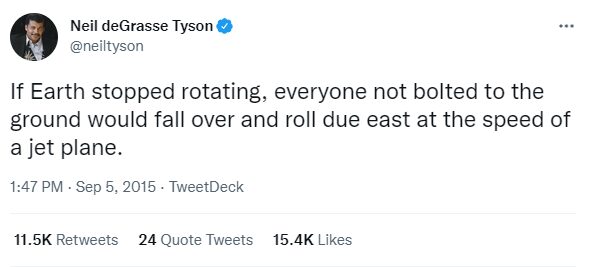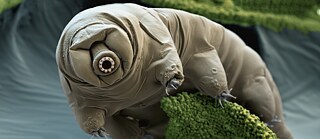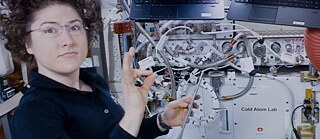Whiplash
The Day the Earth Stood Still
In our catalog of general doomsday fantasies, a scenario is missing that perhaps deserves more barroom banter: standstill. What would happen if, for just a moment, a second, the earth stopped rotating and stood still? A thought exercise. Spoiler alert: You and your dog Chester wouldn’t make it.
Inertia! Momentum! Newton’s Law!
Our planet and all the stuff on it rotates at a speed of about 1,600 kilometers per hour (roughly 1,000 miles per hour), which means that we too are traveling at about 1,600 kilometers per hour or 460 meters per second. For real! We just don’t feel it because everything rotates with the Earth. When traveling in a car or train, for example, we only perceive the change in speed, especially when the car comes to a sudden stop because of an obstacle such as, say, a concrete pillar or the ugly oil tanker that just tipped over in front of us, and everyone who isn’t buckled up is thrown through the windshield. The car comes to a standstill, but we continue our journey at the same speed, which causes abrasions, a basilar skull fracture, and much misery. You don’t have to explain it too in-depth. It’s basic physics, and everyone has experienced it somehow. A car drives at 100 kilometers per hour, so the occupant also moves at 100 kilometers per hour. It is the same with the rotation of the earth — our planet completes a full rotation on its axis once every 24 hours at an almost constant speed. Any object is moving along with the Earth at about 1,600 kilometers per hour, measured at the equator: the higher the latitude, the slower the speed.Klaatu Barada Nikto
Now, let’s imagine an improbable cosmic force — Galactus, Thanos, mean gods, a giant alien mothership on a Vicodin bender... or something like that — stops the earth’s rotation for a second with its thumb. All hypothetical because there is no danger of that happening for real. Honestly, there isn’t! Relax, worrywarts!A Bit Jerky, but That’s All, Right?
When the Earth’s rotation stops, objects in contact with the Earth experience an eastward acceleration of about 50 times the force of gravity. As a result, the atmosphere, the earth’s crust, mountains, houses, horses, cars, you, your dog Chester, and everything else are flung across the surface at practically the same speed as when you fall from a height of 10 kilometers. A Roland Emmerich movie would look like an episode of Teletubbies in comparison. Virtually any structure would collapse. Winds blow at around 1,000 miles per hour, enough to knock down every tree, building, bar, and bouncer. However, most trees, buildings, bars, and bouncers would topple over immediately anyway since they tend to keep moving due to their inertia. Extreme pressure fluctuations that cellular organisms cannot endure would occur. Then, huge tsunamis would follow with the oceans spilling eastward over the landmasses, completing the carnage. Extreme collisions between all bodies, living and nonliving, would kill most creatures. Yes, almost certainly you and Chester too. Before you can even say “extinction event.” (Note to self: Pitch Standstill: The Movie to Roland Emmerich!)Bunker?!
Nope, no dice: There is no refuge. Even if someone stands in a reinforced concrete bunker dug deep in the ground, he or she would die from the 50 g (gravitational force equivalent) of compressive force. You would be squished with a force equal to 50 times your weight. (A jet pilot can handle up to 9 g for a short time, a normal person can barely handle more than 5 g.) And even a concrete bunker would eventually collapse due to the violent movements of the earth’s crust. One way to at least survive the moment of shock would be to position yourself exactly at the North or South Pole, where the rotation speed is zero kilometers per hour. There, you would hardly notice the deceleration, but the mountains, tsunamis, and debris that jettison towards you would be hard to ignore.Whiplash
After that, our planet, like most others in the solar system, would fall silent and be largely barren. We could watch all of this from a space station, but our lives would soon come to an end up there too, and a return to earth would be rather difficult for quite a number of reasons. “Where is my landing platform or the crew that peels me out of the space shuttle... Um actually, where is my continent?!”However, if the decelerated Earth promptly regained its speed, causing your body parts to compress again and the whole affair to blow up in its face, there could still be life on Earth. Most bacteria and protozoa could probably survive the catastrophe and even enjoy a carefree life without any of their predators around, ultimately somehow evolving into something. (Note to self: Pitch Emmerich Standstill: The Movie — Part 2: The Rise of the Tardigrade!)
Curiously, this fascinating apocalypse finds little recognition in Christian eschatology. Quite the opposite: According to the Bible, God actually stopped the earth’s rotation so that the Israelites could finish off the Amorites. A tale that one would perhaps scrutinize a bit more after entertaining this morbid “stopping the Earth” mind game. Because if we’re being honest, we don’t need an invisible cosmic thumb to completely ruin our planet, we’re doing it quite well ourselves — perhaps a little bit more slowly but very steadily. So, I’m just glad we got to talk about some real issues.







